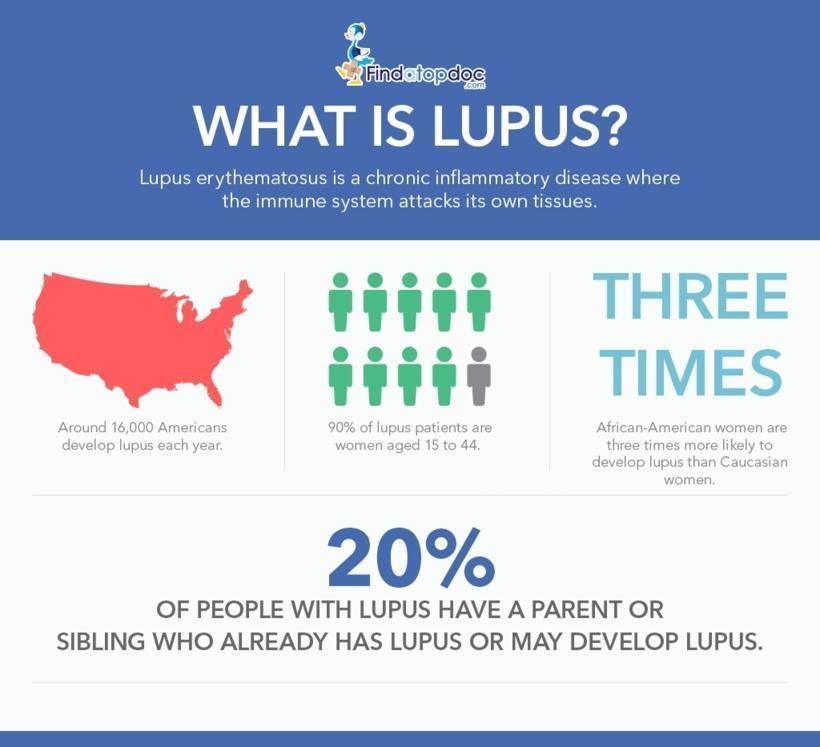
What is Lupus?
Lupus is a chronic inflammatory disease that occurs when your body's immune system attacks your own tissues and organs. Inflammation caused by lupus can affect many different body systems including your joints, skin, kidneys, blood cells, brain, heart and lungs. Lupus can be difficult to diagnose because its signs and symptoms often mimic those of other ailments.
The most distinctive sign of lupus is a facial rash that resembles the wings of a butterfly unfolding across both cheeks. It occurs in many but not all cases of lupus. Some people are born with a tendency toward developing lupus, which may be triggered by infections, certain drugs or even sunlight. While there's no cure for lupus, treatments can help control symptoms.
- Around 16,000 Americans develop lupus each year
- 90% of lupus patients are women aged 15 to 44
- African-American women are three times more likely to develop lupus than Caucasian women
- 20% of people with lupus have a parent or sibling who already has lupus or may develop lupus
What Causes Lupus?
Lupus occurs when your immune system attacks healthy tissue in your body. It's likely that lupus results from a combination of your genetics and your environment. It appears that people with an inherited predisposition for lupus may develop the disease when they come into contact with something in the environment that can trigger lupus. The cause for lupus in most cases, however, is unknown. Some potential triggers include:
- Sunlight. Exposure to the sun may bring on lupus skin lesions or trigger an internal response in susceptible people.
- Infections. Having an infection can initiate lupus or cause a relapse in some people.
- Medications. Lupus can be triggered by certain types of anti-seizure medications, blood pressure medications and antibiotics. People who have drug-induced lupus usually see their symptoms go away when they stop taking the medication.
Risk factors Associated with Lupus
- Your sex. Lupus is more common in women.
- Age. Although lupus affects people of all ages, it's most often diagnosed between the ages of 15 and 40.
- Race. Lupus is more common in African-Americans, Hispanics and Asians.
Various Types of Lupus
- Patients with discoid lupus have a version of the disease that is limited to the skin. It is characterized by a rash that appears on the face, neck, and scalp, and it does not affect internal organs.
- SLE is more severe than discoid lupus because it can affect any of the body's organs or organ systems. Some people may present inflammation or other problems with only skin and joints, while other SLE sufferers will see joints, lungs, kidneys, blood, and/or the heart affected.
- Drug-induced lupus is caused by a reaction with certain prescription drugs and causes symptoms very similar to SLE. Drug-induced lupus is known to subside after the patient stops taking the triggering medication.
- A rare condition, neonatal lupus occurs when a mother passes autoantibodies to a fetus. The unborn and newborn child can have skin rashes and other complications with the heart and blood.
Early treatment is essential to prevent progression of the disease. Beware of all the signs and stop the disease before it’s too late.


